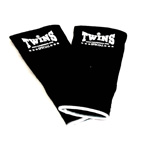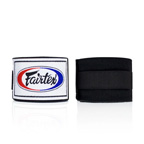
- Date: Monday, October 21, 2024
- Categories: Muay Thai, Fitness, Other, Training
Imagine this: you’re 45 years old, lacing up your gloves, and stepping into the ring for your first Muay Thai fight. Across from you stands a younger opponent, their eyes sharp, their body loose and ready. The crowd buzzes with anticipation. “He’s crazy!” you hear someone whisper. Maybe you are—but this is where your passion has led you. You’ve spent months, maybe years, training for this moment. Now, it’s time to fight.
Sounds far-fetched? It’s not. More and more fighters over 40 are stepping into the Muay Thai ring later in life; I am one of them, so I can say, I talk from experience—it’s thrilling, empowering, and totally worth it. The real question is not “Can I fight?” but “How can I do it safely and effectively?”

In preparing for this article, I reached out to Don Heatrick Muay Thai Performance Specialist, who helps fighters improve their physical, psychological, and technical/tactical performance. As someone I’ve admired for years, Don’s insights have always been a goldmine of practical knowledge. His teachings have transformed how I think about Muay Thai training and training in general. Here’s what I learned from him and from the experiences of fighters worldwide about how to approach fighting after 40.
"With the right conditioning, there’s no reason age alone should stop anyone from fighting safely. It’s all about keeping up with progressive training, building athletic strength, power, and speed, and ensuring sound technical skills." - Don Heatrick.
Let's dive into it!
The Why: What Drives Fighters Over 40
Everyone has their own reasons for stepping into the ring later in life. Some are fulfilling lifelong dreams they didn’t have the chance to pursue in their 20s or 30s. Others are long-time practitioners of Muay Thai who crave the adrenaline and challenge of fighting. For some, it’s a “bucket list” goal—proof that age doesn’t have to dictate what you can or can’t do.

Take my experience, for example: I just had my first Muay Thai fight in Thailand at 40. I always dreamed of it, but life got in the way, and I wasn’t certain if it'd ever happen or not. But then I thought, this dream won’t go away, and I won’t get any younger, so why not? I’m healthy, I’ve been training hard—why not go for it? I went for it, and I had one goal: stay calm, confident, do my very best, and enjoy it. Although a nasty elbow put a stop to the fight, I had achieved my goal, and the whole experience has fired me up—I want to do it again!
For fighters over 40, the “why” isn’t about fame or glory. It’s about pushing personal limits, testing oneself, and proving that age doesn’t define you.
But does age make it inherently dangerous to take heavy blows? According to Don, the answer is reassuring:
“Age alone doesn’t make fighting or taking heavy blows more dangerous if strength, power, and speed are specifically trained and maintained. These physical qualities can be retained to a much greater extent with age if they’re actively developed, and doing so significantly reduces injury risk, which is always the number one priority of strength and conditioning."
The Benefits of Fighting After 40
While there’s no denying that youth brings certain advantages—speed, agility, and quicker recovery times—fighting over 40 comes with its own unique set of benefits.
Experience Over Power
When you’re older, you fight smarter, not harder. Sure, your 20-something opponent might be quicker, but you’ve got something they don’t—years of accumulated experience, both in and out of the gym. You’ve developed the patience and strategy that can make the difference between winning and losing. You know when to engage and when to step back, and you’ve learned to control the pace of a fight.
If you fight someone half your age, they may be fast, but they may also burn themselves out in the first round. You keep your cool, wait for the right moments, by the third round, they will struggle, and the win can be yours.
Fighting is like a chess match—you have to outthink your opponent.

Mental Strength
Fighting is as much a mental game as it is physical. And when you’re over 40, you’ve likely built up some serious mental toughness from the ups and downs life throws at you. This resilience translates perfectly into the ring. You’ve faced stress at work, in relationships, and perhaps even health challenges—none of which fazes you anymore. When the going gets tough in a fight, you don’t panic. Instead, you stay composed and strategize.
One coach, who has trained fighters of all ages, explains it well: “Older fighters tend to have more emotional control. When they take a hit, they don’t react immediately. They assess the situation, adjust their defense, and counter more strategically. That level of calm under pressure is an enormous advantage.”
Physical Fitness and Longevity
Preparing for a fight forces you to get into the best shape of your life. At any age, the rigorous training schedule—pad work, sparring, conditioning—will improve your cardiovascular fitness, muscle tone, and flexibility. Fighters over 40 often find that they are in better health than they were 10 or 15 years prior. There are aches and pains, I’m not gonna lie, but aren’t people who move from the desk to the couch complaining about unbearable back and joint pain? I don’t know about you, but I rather have muscle soreness from an unblocked kick and tight calves from running too much.
The Risks: Training Smart to Fight Hard
Of course, fighting after 40 comes with risks, but these risks can be mitigated with the right preparation. According to Don, the biggest concern isn’t the age itself:
“The real issue as we age is that our soft tissues become less resilient, so planned, progressive training is crucial to keep them strong, and developing neck strength is particularly important as we age, to to help absorb the shock of head blows and reduce the risk of concussions from strikes."

What About Women Fighting Over 40?
Some may wonder whether older women are at higher risk in combat sports than men. However, Don reassures us:
“Women aren’t necessarily at a higher risk than men if they’re well-conditioned.” The key lies in addressing some gender-specific factors through training.
-
Knee Health:
Women tend to have a steeper Q-angle (the angle between the hips and knees), which can put extra stress on the knees. But with proper strength and conditioning, these risks can be minimized. -
Bone Density:
Women are more susceptible to osteoporosis, especially post-menopause. “Regular resistance training and load-bearing exercises, like Muay Thai, help maintain bone strength and health,” says Don. This makes Muay Thai not only safe but also beneficial for long-term well-being.

Injury Prevention and Recovery
Injuries are more common as you age, and recovery times tend to lengthen. This means you need to be more strategic with your training. Focus on injury prevention through proper warm-ups, stretching, and strength training. It’s essential to listen to your body—something many younger fighters struggle with. Rest and recovery are not just important; they’re critical. We find that a dip in the ice bath daily does wonders, so we have one for you at Khao Lak Muay Thai always ready to go.
Recovery is non-negotiable. While younger fighters can often push through soreness and fatigue, older fighters need to make recovery a priority. This includes getting enough sleep, eating a balanced diet rich in anti-inflammatory foods, and staying hydrated. Incorporating recovery methods like massage therapy, cold therapy, and stretching can go a long way in keeping you fight-ready.
After 40, you can’t treat your body the way you did at 25. You need to train smarter. Focus on technique and timing rather than brute force, and take the time to recover properly. That’s how you avoid burnout and injuries.
There comes a time for every Thai boxer, when they become aware that there were benefits to being younger in this game… - says Don in his relevant article.
How to Train for a Fight After 40
If you’re seriously considering fighting in Muay Thai after 40, your training will need to look a little different from that of younger fighters. Here are some essential tips for preparing:
Tailored Training Regimen
Your training should focus on balance—mixing hard sessions with technical drills and light recovery days. Work with your coach to design a training plan that suits your body’s needs and goals. This might mean fewer sparring rounds and more pad work or cardio sessions that protect your joints, such as swimming or cycling.

Strength Training and Mobility
Maintaining muscle mass is crucial for older fighters, not just for performance but also for injury prevention. Resistance training with weights or bodyweight exercises like squats, lunges, and push-ups will help you build strength while supporting your joints.
In terms of mobility and flexibility, it tends to decrease as you age, but it’s critical in Muay Thai, where high kicks and fluid movement are part of the game. Incorporating yoga, dynamic stretching, or mobility drills into your routine will help keep your body limber and reduce the risk of injuries.
Adapting Sparring
As you probably know, heavy sparring isn’t always necessary to prepare for a fight, especially when you’re over 40. Focus more on technical sparring—work on your timing, accuracy, and defense. Let the younger fighters go hard while you focus on honing your technique.

Facing Younger Opponents
One of the biggest mental hurdles for fighters over 40 is facing younger opponents. Let’s be real—they’re faster, often stronger, and recover quicker. But that doesn’t mean they’ll automatically win. Older fighters bring a wealth of life and fight experience into the ring, and that can be a game-changer.
Controlling the pace of the fight, managing your energy, and staying sharp are your greatest assets as an older fighter. Younger opponents may try to overwhelm you with speed, but experience teaches you how to conserve your energy and exploit their mistakes.
Conclusion: Don't Use Your Age as an Excuse in Muay Thai
Fighting Muay Thai after 40 isn’t just possible—it’s exhilarating. Sure, there are challenges, but the rewards are immense. Whether you’re stepping into the ring for the first time or making a comeback after years of training, Muay Thai offers the perfect platform to test your limits and defy the expectations of age.
So, are you ready to prove that age is just a number? With the right preparation, mindset, and strategy, your best fights could still be ahead of you. Let us guide you at Khao Lak Muay Thai!







